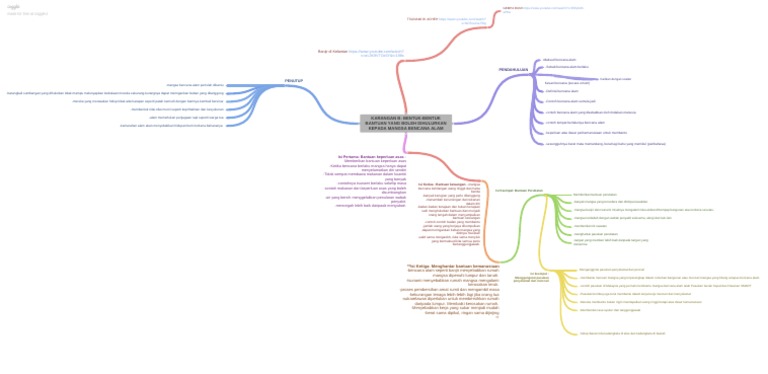Managing Risk In The Era Of The Great Decoupling

Table of Contents
Understanding the Dynamics of the Great Decoupling
The Great Decoupling refers to the ongoing shift away from a globally integrated economic system toward a more fragmented and regionalized one. This trend is driven by several interconnected factors, creating significant challenges for businesses operating in a globalized world.
Geopolitical Tensions and Their Impact
Rising trade wars, escalating sanctions, and increasing political instability are major drivers of the Great Decoupling. These geopolitical tensions create significant uncertainty and disrupt established global supply chains.
- Examples of specific geopolitical events and their impact: The US-China trade war, the Russian invasion of Ukraine, and Brexit have all demonstrated the fragility of globally integrated supply chains, leading to shortages, price increases, and significant disruptions.
- Increased regulatory uncertainty and its implications: Changes in trade policies, sanctions, and export controls create significant regulatory uncertainty, making it difficult for businesses to plan and invest with confidence. This uncertainty increases the complexity of risk management, requiring businesses to be agile and adaptable.
Shifting Global Supply Chains
The fragmentation of global supply chains is a direct consequence of the Great Decoupling. Companies are increasingly diversifying their sourcing strategies, moving away from reliance on single suppliers and specific geographic regions. This trend is leading to the rise of regionalization, with a focus on nearshoring and reshoring.
- Examples of companies diversifying their supply chains: Many multinational corporations are actively seeking alternative suppliers in different regions to reduce their dependence on specific countries. This often involves significant investment in new facilities and relationships.
- Challenges and costs associated with reshoring and nearshoring: While reshoring and nearshoring can improve supply chain resilience, they also present challenges, including higher labor costs, logistical complexities, and potential delays. These factors must be carefully considered as part of a comprehensive risk management plan.
Technological Dependence and National Security Concerns
Reliance on specific technologies and countries for critical components or processes presents significant risks in the era of decoupling. National security concerns are increasingly influencing trade policies and technological partnerships.
- Examples of technology sectors vulnerable to decoupling: Semiconductor manufacturing, rare earth minerals, and advanced manufacturing technologies are particularly vulnerable due to their concentration in specific geographic regions.
- Strategies for mitigating technological dependencies: Diversifying technology suppliers, investing in domestic production capabilities, and developing alternative technologies are crucial strategies for mitigating technological dependencies and ensuring national security.
Key Risks Associated with the Great Decoupling
The Great Decoupling presents several key risks that businesses must actively manage to ensure their long-term success.
Supply Chain Disruptions
The increased fragmentation and complexity of global supply chains make them more vulnerable to disruptions caused by geopolitical events, pandemics, and natural disasters.
- Examples of recent supply chain disruptions and their consequences: The COVID-19 pandemic highlighted the fragility of global supply chains, leading to widespread shortages of essential goods and components.
- Strategies for building more resilient supply chains: Diversifying suppliers, building strategic inventory, developing robust contingency plans, and improving supply chain visibility are critical for mitigating supply chain disruptions.
Increased Costs and Inflation
The decoupling process is driving up input costs, transportation expenses, and overall inflation. Businesses face increased pressure to manage costs and maintain profitability in this challenging environment.
- Data illustrating rising costs in specific sectors: Data from various industry reports demonstrate significant increases in raw material costs, energy prices, and transportation expenses across several sectors.
- Strategies for managing cost pressures: Implementing cost-cutting measures, increasing efficiency, adjusting pricing strategies, and negotiating favorable terms with suppliers are crucial for managing cost pressures.
Cybersecurity Threats
The increasingly complex and fragmented global landscape increases the risk of cyberattacks targeting businesses and their supply chains.
- Examples of cyberattacks targeting businesses and supply chains: Recent high-profile cyberattacks have demonstrated the vulnerability of global supply chains to cyber threats, leading to data breaches, operational disruptions, and financial losses.
- Best practices for cybersecurity risk management: Investing in robust cybersecurity infrastructure, implementing strong security protocols, and conducting regular security assessments are essential for mitigating cybersecurity threats.
Effective Risk Management Strategies in the Era of Decoupling
Effective risk management is essential for navigating the challenges of the Great Decoupling. Businesses must adopt proactive strategies to identify, assess, and mitigate the risks associated with this ongoing shift.
Proactive Risk Assessment and Monitoring
Continuous monitoring of geopolitical risks, supply chain vulnerabilities, and emerging threats is critical for proactive risk management.
- Tools and techniques for risk assessment: Various tools and techniques, including scenario planning, stress testing, and geopolitical risk analysis, can be used to identify and assess potential risks.
- The value of scenario planning and contingency planning: Developing detailed scenario plans and contingency plans allows businesses to prepare for various potential disruptions and ensure business continuity.
Diversification and Supply Chain Resilience
Diversifying suppliers, geographic locations, and production processes is vital for building more resilient supply chains.
- Examples of successful supply chain diversification strategies: Many companies are successfully diversifying their supplier base by sourcing from multiple countries and regions.
- The benefits of building stronger relationships with key suppliers: Stronger relationships with key suppliers can improve collaboration, communication, and trust, leading to better supply chain resilience.
Technological Innovation and Adaptation
Technology plays a critical role in mitigating risks and improving supply chain visibility.
- Examples of technologies that can improve supply chain resilience: Blockchain technology, artificial intelligence (AI), and the Internet of Things (IoT) can enhance supply chain visibility, traceability, and resilience.
- Importance of investing in digital transformation: Investing in digital transformation initiatives is crucial for improving supply chain agility and adaptability in the face of uncertainty.
Conclusion
The Great Decoupling presents significant challenges and risks to businesses operating in a globalized world. Supply chain disruptions, increased costs, and cybersecurity threats are just some of the key risks that must be actively managed. By proactively addressing the risks associated with the Great Decoupling and implementing the strategies outlined in this article—including robust risk assessment, supply chain diversification, and technological innovation—businesses can build more resilient operations and achieve long-term success. Don't wait – start building your effective Great Decoupling risk management plan today!

Featured Posts
-
 Pochemu Makron Starmer Merts I Tusk Ne Poekhali V Kiev 9 Maya
May 09, 2025
Pochemu Makron Starmer Merts I Tusk Ne Poekhali V Kiev 9 Maya
May 09, 2025 -
 Wynne Evans Illness Recent Health Update And Plans For A Return To The Stage
May 09, 2025
Wynne Evans Illness Recent Health Update And Plans For A Return To The Stage
May 09, 2025 -
 10 Adn Pas Selangor Bantu Mangsa Tragedi Putra Heights Bantuan Dan Sokongan Dihulurkan
May 09, 2025
10 Adn Pas Selangor Bantu Mangsa Tragedi Putra Heights Bantuan Dan Sokongan Dihulurkan
May 09, 2025 -
 Jeanine Pirro Trumps Choice For Top Dc Prosecutor
May 09, 2025
Jeanine Pirro Trumps Choice For Top Dc Prosecutor
May 09, 2025 -
 Inter Milans Shock De Ligt Pursuit Loan Move With Option To Buy
May 09, 2025
Inter Milans Shock De Ligt Pursuit Loan Move With Option To Buy
May 09, 2025
